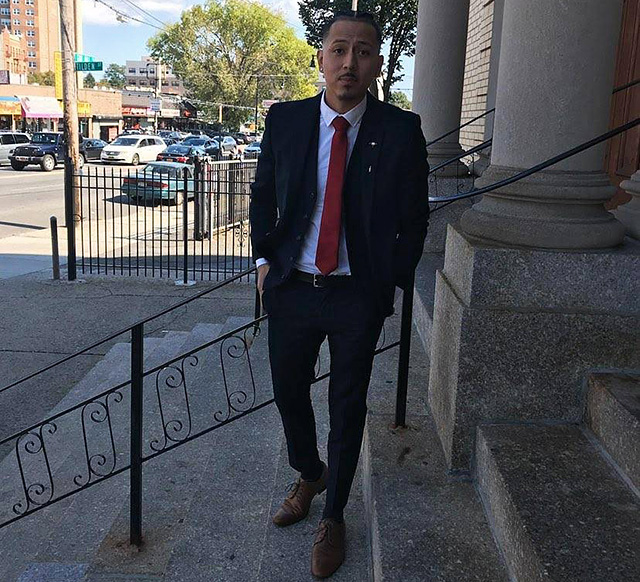Legacy of Stop and Frisk

By Danielle Farrell-Bannister
It was a night Christian Santillan will never forget. “You match the description of someone we’re looking for,” a police officer told him near his home where he lives with his family in the Bronx.
“It was intimidating,” Santillan said. “The cop was using vulgar language, threatening that I would go to jail if I didn’t comply with their orders. It’s either their way or go to jail. They asked for ID then they let me go. And they never apologize.”
Santillan’s story is a typical stop and frisk experience in New York City. During his three terms in City Hall, former mayor Michael Bloomberg endorsed this aggressive policing strategy. As recently as January he made a statement confirming his approval of stop-and-frisk, yet in late November, he announced an apology, retracting his support of the policy. Coincidentally he had entered the running for president on the last day to enroll. “I was wrong, and I am sorry,” Bloomberg was quoted saying in the New York Times.
Public Advocate Jumaane Williams said Bloomberg’s timing was questionable and a decade late. “It is not nearly enough to erase the legacy of the systemic abuses of stop, question, and frisk on the people whose lives were harmed by over-policing, nor the communities criminalized by it,” Williams office said in an email interview. “Stop and frisk was just one of many tactics pursued by the Bloomberg administration which had a detrimental impact on lower-income New Yorkers and communities of more color. On housing, on education, and more, the question of those years is not just ‘were they good policies’ but ‘who were they good for.'”
Stop and frisk is a policy that permits a police officer to momentarily detain and pat down or search a person suspected of criminal activity, especially when suspected of concealing a weapon. In 1968, the case of John W. Terry v. The State of Ohio challenged stop and frisk as a violation of the Fourth Amendment which guarantees the right of people, in the words of the amendment “to be secure in their persons, houses, papers, and effects, against unreasonable searches and seizures.” These rights are not to be violated except upon probable cause. But, the Supreme Court ruled that stop and frisk does not compromise the Fourth Amendment.
The New York Civil Liberties Union studied data gathered on the results of stop-and-frisk. At the height of stop-and-frisk in 2011 under the Bloomberg administration, more than 685,000 people were stopped and nearly nine out of 10 stopped-and-frisked New Yorkers did not have charges brought against them. The NYCLU used annual police reports in their study. They learned that more than 80 percent of the individuals that were stopped-and-frisked between 2002 and 2011 were between the ages of 14 and 24. Ages weren’t noted after 2011.
In 2013 federal Judge Shira A. Scheindlin ruled that the stop-and-frisk policy of the New York Police Department violated the constitutional rights of minorities in the city. Santillan said Bloomberg’s apologies don’t mean much because stop and frisk still happens illegally. “Us black and brown are always targeted, even just for sitting down in front of a building,” he said. “I don’t think it’ll stop.”
Judge Scheindlin noted that it isn’t fair to subject people to racially motivated targeting assuming that everyday citizens are criminals. Santillan agrees. “Cops need more training and trying to deescalate the situation instead of using force or drawing their weapon,” he said. “We as the public must be calm and address the situation in a calm manner. Sometimes we get rattled up and things go left. Either someone goes to jail or someone dies.”
